ENCAPSULADOS, BY SANDRA GAMBOA, IN VALLADOLID
The Patio Herreriano Museum hosts the recent proposal by Sandra Gamboa (Bogota, Colombia) in which she outlines the necessary arguments to be able to analyse mental health, especially anxiety and depression. In Encapsulados, the Colombian-Spanish artist invites us to carry out this exercise of understanding, rapprochement and empathy with those who suffer from one of the great plagues of this century through the different related iconography that fills the exhibition hall of the Castilian institution.
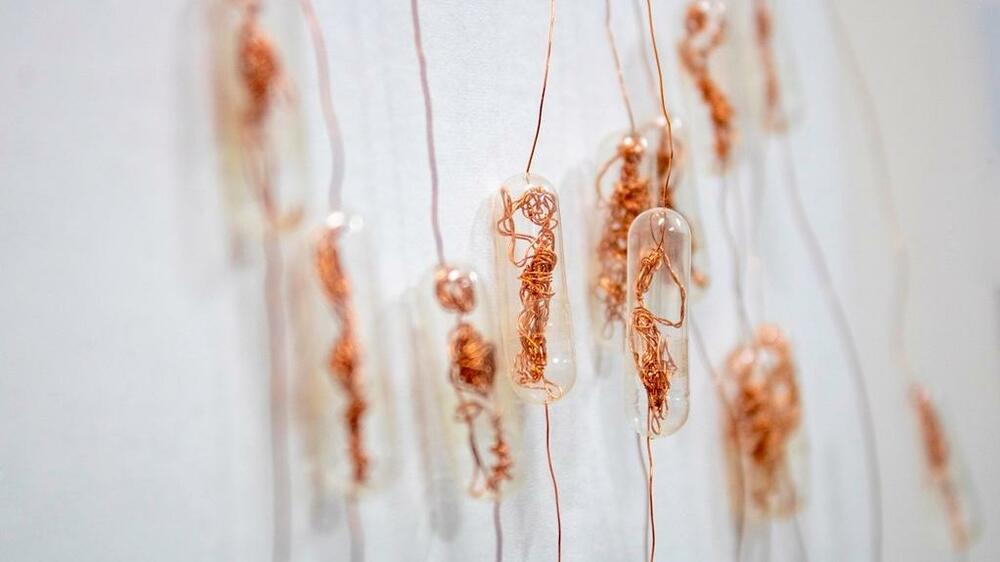
The exhibition goes through these elements in watertight spaces with techniques of different kinds that, from acrylic paintings, photography or, mostly, artistic elements conceived from and with pharmaceutical objects -such as the iconic capsules of pills that make up the argumental and nominal thread of the exhibition- have a common point in the facilitation of this analysis of social and communication character.
However, and this is how it can be understood, part of the situation lies in the absence of a clear and concrete awareness of the issue in favour of a decentralized look that prevents that empathy, the first step towards a solution. For this reason, the installation also alludes to one's own experience in a certain way, affecting the emotional pressure that we all share and that can be accentuated by a misunderstanding of the solutions, distancing from the outset those that are perhaps simpler, more feasible and effective.
Sandra Gamboa. Encapsulados can be seen until September 29th at the Museo Patio Herreriano, Jorge Guillén st. 6, Valladolid (Spain).
Related Topics
May interest you
It takes an Island to Feel this Good is Darja Bajagić’s exhibition for the Montenegro pavilion at Venice Biennale 2024. Curated by Ana Simona Zelenović and organized by the Museum of Contemporary Art of Montenegro at the initiative of commissioner Vladislav Šćepanović, the exhibition will present a critical consideration of the culture of collective memory and the relationship to shared historical heritage.
ICONOGRAPHY, MEMORY AND HISTORY - THE MONTENEGRO PAVILION
It takes an Island to Feel this Good is Darja Bajagić’s exhibition for the Montenegro pavilion at Venice Biennale 2024. Curated by Ana Simona Zelenović and organized by the Museum of Contemporary Art of Montenegro at the initiative of commissioner Vladislav Šćepanović, the exhibition will present a critical consideration of the culture of collective memory and the relationship to shared historical heritage.
It takes an Island to Feel this Good is Darja Bajagić’s exhibition for the Montenegro pavilion at Venice Biennale 2024. Curated by Ana Simona Zelenović and organized by the Museum of Contemporary Art of Montenegro at the initiative of commissioner Vladislav Šćepanović, the exhibition will present a critical consideration of the culture of collective memory and the relationship to shared historical heritage.
ICONOGRAPHY, MEMORY AND HISTORY - THE MONTENEGRO PAVILION
It takes an Island to Feel this Good is Darja Bajagić’s exhibition for the Montenegro pavilion at Venice Biennale 2024. Curated by Ana Simona Zelenović and organized by the Museum of Contemporary Art of Montenegro at the initiative of commissioner Vladislav Šćepanović, the exhibition will present a critical consideration of the culture of collective memory and the relationship to shared historical heritage.
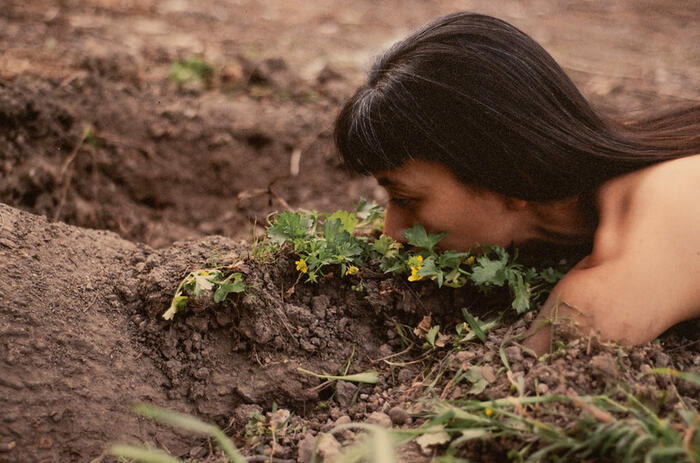
La Panera Art Center of Lleida presents in its exhibition Descolonicemos el mundo(Decolonize the World) a conceptual tour through the production of Regina Jose Galindo (Guatemala City, Guatemala, 1974) in which a decolonizing approach prevails. Although in some cases of her work this process is not so evident, this view can be traced from the geographical experience of the artist's country of origin and its process of colonization and independence.
REGINA JOSÉ GALINDO AND HER DECOLONIZING VISION AT LA PANERA
La Panera Art Center of Lleida presents in its exhibition Descolonicemos el mundo(Decolonize the World) a conceptual tour through the production of Regina Jose Galindo (Guatemala City, Guatemala, 1974) in which a decolonizing approach prevails. Although in some cases of her work this process is not so evident, this view can be traced from the geographical experience of the artist's country of origin and its process of colonization and independence.
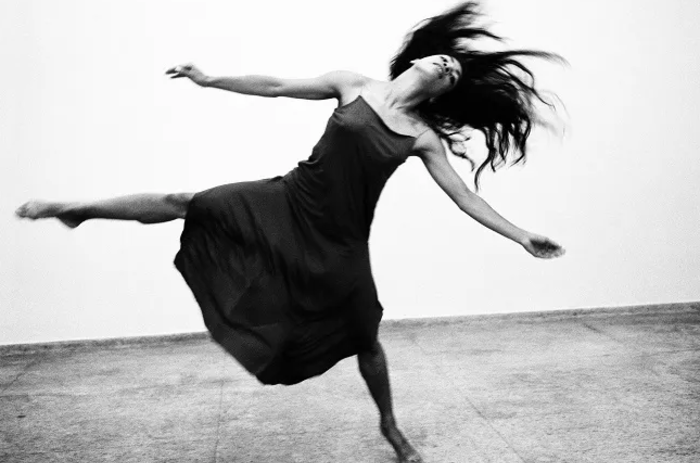
The trajectory of Barbara Brändli (Schaffhousen, Switzerland 1932 - Caracas, Venezuela, 2011) in photography requires a conscientious analysis of several points. Without stopping at them, it is very likely to miss the reason for her approach, her vision that transcends the documentary as a simple objective or her contributions to that world that she began to consolidate in that Venezuela of welcome on her arrival in South America from her native Switzerland.
BARBARA BRÄNDLI, FROM THE OTHER SIDE
The trajectory of Barbara Brändli (Schaffhousen, Switzerland 1932 - Caracas, Venezuela, 2011) in photography requires a conscientious analysis of several points. Without stopping at them, it is very likely to miss the reason for her approach, her vision that transcends the documentary as a simple objective or her contributions to that world that she began to consolidate in that Venezuela of welcome on her arrival in South America from her native Switzerland.
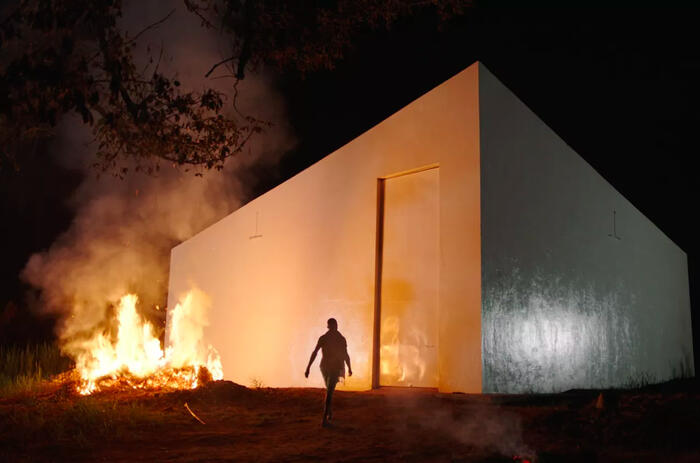
The title of the 60th International Art Exhibition of the Biennale di Venezia, "Stranieri Ovunque", refers, in part, to foreignness as the inherent nature of the subject. Understood in this way, the national pavilions of Spain, the Netherlands and the United Kingdom exhibit artistic proposals that develop the theme of colonialism and reconstruct histories, remedy ties between identity and territory, and explore the dramatic plurality of this potent historical axis. That said, this review does not intend to unveil or unpack the most unjust transcendental truths, but merely to reflect on the musings of others.
THREE PAVILIONS AT BIENNALE 2024 THAT EXPLORE THEIR OWN COLONIAL PASTS
The title of the 60th International Art Exhibition of the Biennale di Venezia, "Stranieri Ovunque", refers, in part, to foreignness as the inherent nature of the subject. Understood in this way, the national pavilions of Spain, the Netherlands and the United Kingdom exhibit artistic proposals that develop the theme of colonialism and reconstruct histories, remedy ties between identity and territory, and explore the dramatic plurality of this potent historical axis. That said, this review does not intend to unveil or unpack the most unjust transcendental truths, but merely to reflect on the musings of others.
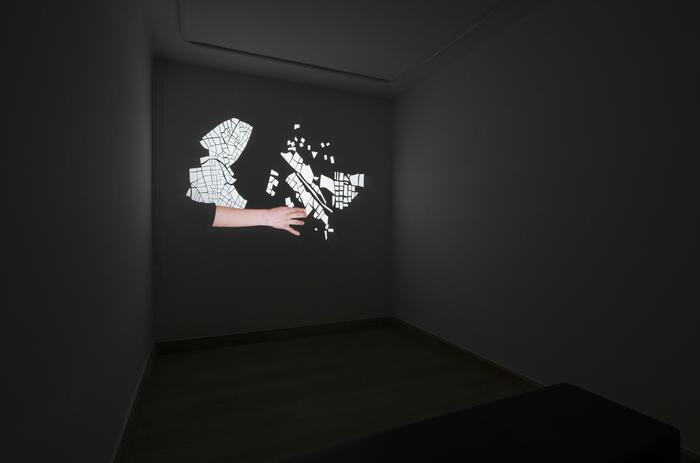
Tras la piel del mapa (Behind the skin of the map) is the first solo exhibition of Marina Camargo (1980, Maceió, Brazil) at the Zielinsky Gallery in Barcelona.
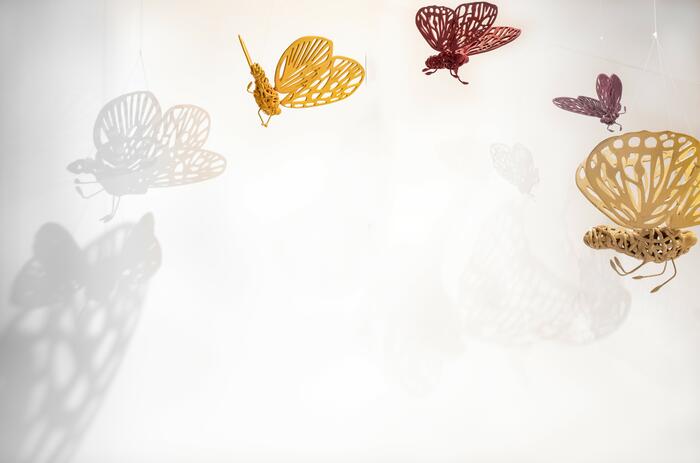
Banco Macro presented El Oro de los sueños (The Gold of Dreams), the exhibition by Andrés Paredes which is part of a new artistic program within its agenda at the Corporate Tower. The program is called Macro Federal, an initiative to present artists from all the provinces of Argentina, starting with Misiones. It is curated by Patricia Rizzo.
THE GOLD OF DREAMS: ANDRÉS PAREDES AT THE MACRO TOWER
Banco Macro presented El Oro de los sueños (The Gold of Dreams), the exhibition by Andrés Paredes which is part of a new artistic program within its agenda at the Corporate Tower. The program is called Macro Federal, an initiative to present artists from all the provinces of Argentina, starting with Misiones. It is curated by Patricia Rizzo.
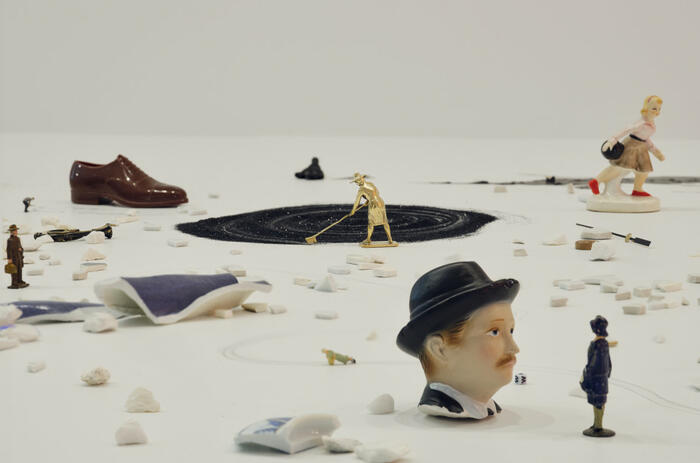
Liliana Porter: The Task is the artist’s exhibition at Dia Bridgehampton. The exhibition comprises a new commission alongside a selection of works from the 1970s and video documentation of a recent play by Porter and collaborator Ana Tiscornia.
LILIANA PORTER'S DISLOCATED TIME
Liliana Porter: The Task is the artist’s exhibition at Dia Bridgehampton. The exhibition comprises a new commission alongside a selection of works from the 1970s and video documentation of a recent play by Porter and collaborator Ana Tiscornia.
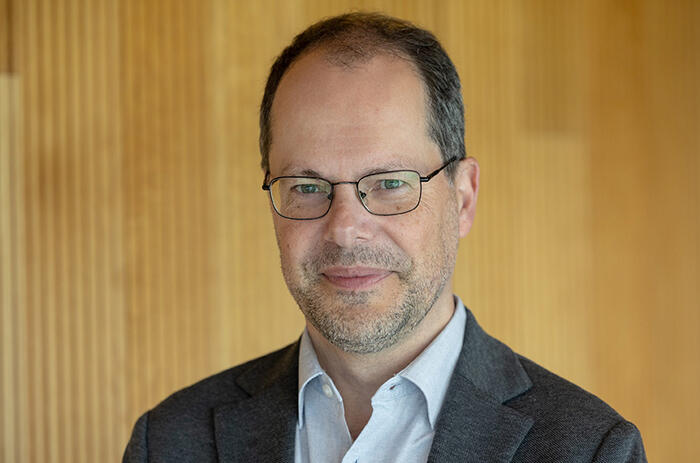
After six years of his collaboration as a teacher in the Master's Degree in Curatorial Studies offered by the Museo Universidad de Navarra (MUN), Gabriel Pérez-Barreriro has been appointed as the institution's new artistic director. With extensive experience in university museums and other centers in Europe, the United States and Latin America, he is now the new head of the MUN's artistic strategy together with Teresa Lasheras, artistic director of performing arts and music.
GABRIEL PÉREZ-BARREIRO: THE MUN'S NEW ARTISTIC DIRECTOR
After six years of his collaboration as a teacher in the Master's Degree in Curatorial Studies offered by the Museo Universidad de Navarra (MUN), Gabriel Pérez-Barreriro has been appointed as the institution's new artistic director. With extensive experience in university museums and other centers in Europe, the United States and Latin America, he is now the new head of the MUN's artistic strategy together with Teresa Lasheras, artistic director of performing arts and music.
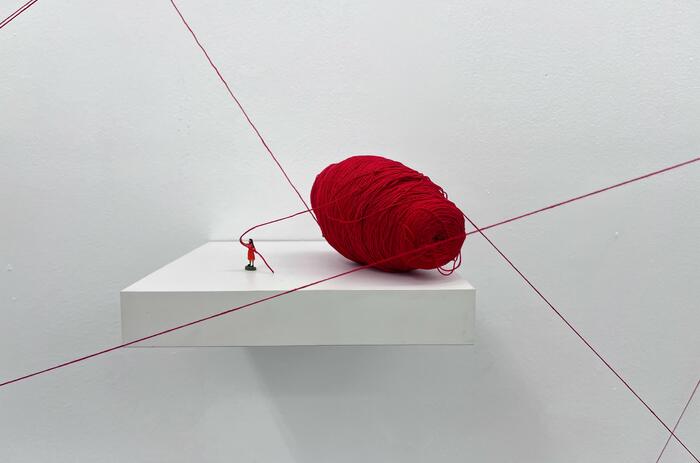
Liliana Porter (Buenos Aires, Argentina, 1941) has a long history shared with Espacio Minimo. The Madrid gallery pampers every move and celebrates the extensive relationship with the Argentinean artist, always offering her the possibility of receiving her work and witnessing its evolution. For the opening of the space's season, the landing is called Otros cuentos inconclusos, a new proposal that deals with representation and two dimensional axes —space and time— that bear witness to many of the questions raised about human relations.
THE UNFINISHED STORIES OF LILIANA PORTER
Liliana Porter (Buenos Aires, Argentina, 1941) has a long history shared with Espacio Minimo. The Madrid gallery pampers every move and celebrates the extensive relationship with the Argentinean artist, always offering her the possibility of receiving her work and witnessing its evolution. For the opening of the space's season, the landing is called Otros cuentos inconclusos, a new proposal that deals with representation and two dimensional axes —space and time— that bear witness to many of the questions raised about human relations.
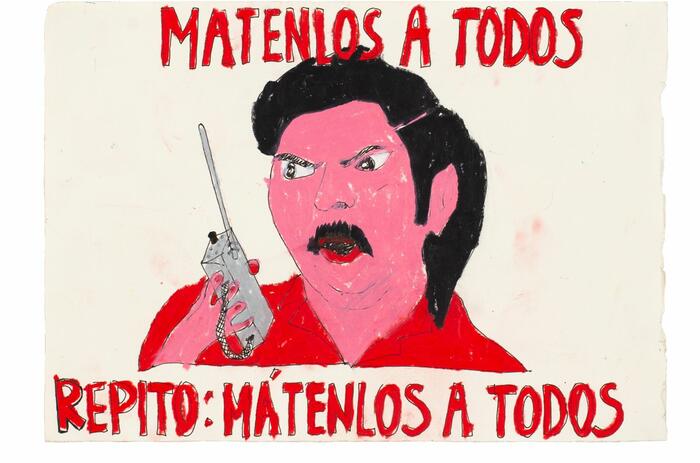
The double problem that arose from the acquisition in the 1980s of several hippopotamuses in one of the many eccentricities of the trafficker Pablo Escóbar is the starting point of a fable that, between the tragic and the comic, Camilo Restrepo (Medellín, Colombia, 1975) has managed to weave with a very successful graphic and conceptual narrative. With Cocaine Hippos Sweat Blood, the spectator faces this surrealistic story from its beginnings to the present by the hand of a figurativism that sets aside the academic and the technical for the sake of a greater aesthetic and relational concordance with that of the madness transmitted by the story itself.
THE NARCO-HYPOPOTAMUSES’ TALE, BY CAMILO RESTREPO
The double problem that arose from the acquisition in the 1980s of several hippopotamuses in one of the many eccentricities of the trafficker Pablo Escóbar is the starting point of a fable that, between the tragic and the comic, Camilo Restrepo (Medellín, Colombia, 1975) has managed to weave with a very successful graphic and conceptual narrative. With Cocaine Hippos Sweat Blood, the spectator faces this surrealistic story from its beginnings to the present by the hand of a figurativism that sets aside the academic and the technical for the sake of a greater aesthetic and relational concordance with that of the madness transmitted by the story itself.
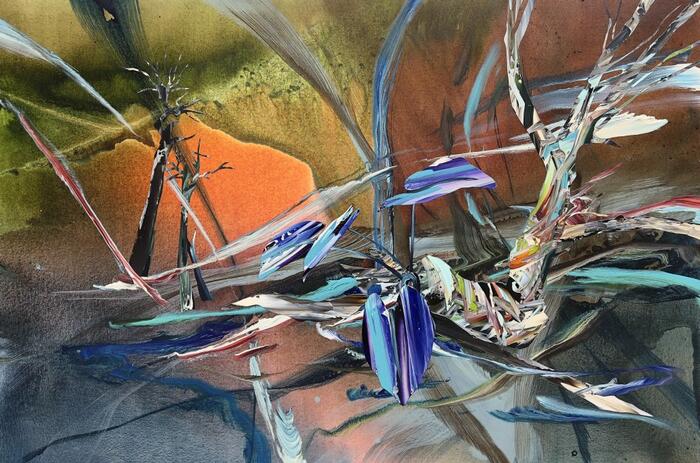
Germán Tagle (Santiago, Chile, 1976) returns to Madrid's Daniel Cuevas, where he held his first exhibition two years ago, with El territorio portátil, a show in which the Chilean artist returns to the axes of landscape, painting and culture that have been the backbone of his latest productions.
GERMÁN TAGLE'S REDEFINITION OF LANDSCAPE
Germán Tagle (Santiago, Chile, 1976) returns to Madrid's Daniel Cuevas, where he held his first exhibition two years ago, with El territorio portátil, a show in which the Chilean artist returns to the axes of landscape, painting and culture that have been the backbone of his latest productions.
It takes an Island to Feel this Good is Darja Bajagić’s exhibition for the Montenegro pavilion at Venice Biennale 2024. Curated by Ana Simona Zelenović and organized by the Museum of Contemporary Art of Montenegro at the initiative of commissioner Vladislav Šćepanović, the exhibition will present a critical consideration of the culture of collective memory and the relationship to shared historical heritage.
ICONOGRAPHY, MEMORY AND HISTORY - THE MONTENEGRO PAVILION
It takes an Island to Feel this Good is Darja Bajagić’s exhibition for the Montenegro pavilion at Venice Biennale 2024. Curated by Ana Simona Zelenović and organized by the Museum of Contemporary Art of Montenegro at the initiative of commissioner Vladislav Šćepanović, the exhibition will present a critical consideration of the culture of collective memory and the relationship to shared historical heritage.

La Panera Art Center of Lleida presents in its exhibition Descolonicemos el mundo(Decolonize the World) a conceptual tour through the production of Regina Jose Galindo (Guatemala City, Guatemala, 1974) in which a decolonizing approach prevails. Although in some cases of her work this process is not so evident, this view can be traced from the geographical experience of the artist's country of origin and its process of colonization and independence.
REGINA JOSÉ GALINDO AND HER DECOLONIZING VISION AT LA PANERA
La Panera Art Center of Lleida presents in its exhibition Descolonicemos el mundo(Decolonize the World) a conceptual tour through the production of Regina Jose Galindo (Guatemala City, Guatemala, 1974) in which a decolonizing approach prevails. Although in some cases of her work this process is not so evident, this view can be traced from the geographical experience of the artist's country of origin and its process of colonization and independence.

The trajectory of Barbara Brändli (Schaffhousen, Switzerland 1932 - Caracas, Venezuela, 2011) in photography requires a conscientious analysis of several points. Without stopping at them, it is very likely to miss the reason for her approach, her vision that transcends the documentary as a simple objective or her contributions to that world that she began to consolidate in that Venezuela of welcome on her arrival in South America from her native Switzerland.
BARBARA BRÄNDLI, FROM THE OTHER SIDE
The trajectory of Barbara Brändli (Schaffhousen, Switzerland 1932 - Caracas, Venezuela, 2011) in photography requires a conscientious analysis of several points. Without stopping at them, it is very likely to miss the reason for her approach, her vision that transcends the documentary as a simple objective or her contributions to that world that she began to consolidate in that Venezuela of welcome on her arrival in South America from her native Switzerland.

The title of the 60th International Art Exhibition of the Biennale di Venezia, "Stranieri Ovunque", refers, in part, to foreignness as the inherent nature of the subject. Understood in this way, the national pavilions of Spain, the Netherlands and the United Kingdom exhibit artistic proposals that develop the theme of colonialism and reconstruct histories, remedy ties between identity and territory, and explore the dramatic plurality of this potent historical axis. That said, this review does not intend to unveil or unpack the most unjust transcendental truths, but merely to reflect on the musings of others.
THREE PAVILIONS AT BIENNALE 2024 THAT EXPLORE THEIR OWN COLONIAL PASTS
The title of the 60th International Art Exhibition of the Biennale di Venezia, "Stranieri Ovunque", refers, in part, to foreignness as the inherent nature of the subject. Understood in this way, the national pavilions of Spain, the Netherlands and the United Kingdom exhibit artistic proposals that develop the theme of colonialism and reconstruct histories, remedy ties between identity and territory, and explore the dramatic plurality of this potent historical axis. That said, this review does not intend to unveil or unpack the most unjust transcendental truths, but merely to reflect on the musings of others.

Tras la piel del mapa (Behind the skin of the map) is the first solo exhibition of Marina Camargo (1980, Maceió, Brazil) at the Zielinsky Gallery in Barcelona.

Banco Macro presented El Oro de los sueños (The Gold of Dreams), the exhibition by Andrés Paredes which is part of a new artistic program within its agenda at the Corporate Tower. The program is called Macro Federal, an initiative to present artists from all the provinces of Argentina, starting with Misiones. It is curated by Patricia Rizzo.
THE GOLD OF DREAMS: ANDRÉS PAREDES AT THE MACRO TOWER
Banco Macro presented El Oro de los sueños (The Gold of Dreams), the exhibition by Andrés Paredes which is part of a new artistic program within its agenda at the Corporate Tower. The program is called Macro Federal, an initiative to present artists from all the provinces of Argentina, starting with Misiones. It is curated by Patricia Rizzo.

Liliana Porter: The Task is the artist’s exhibition at Dia Bridgehampton. The exhibition comprises a new commission alongside a selection of works from the 1970s and video documentation of a recent play by Porter and collaborator Ana Tiscornia.
LILIANA PORTER'S DISLOCATED TIME
Liliana Porter: The Task is the artist’s exhibition at Dia Bridgehampton. The exhibition comprises a new commission alongside a selection of works from the 1970s and video documentation of a recent play by Porter and collaborator Ana Tiscornia.

After six years of his collaboration as a teacher in the Master's Degree in Curatorial Studies offered by the Museo Universidad de Navarra (MUN), Gabriel Pérez-Barreriro has been appointed as the institution's new artistic director. With extensive experience in university museums and other centers in Europe, the United States and Latin America, he is now the new head of the MUN's artistic strategy together with Teresa Lasheras, artistic director of performing arts and music.
GABRIEL PÉREZ-BARREIRO: THE MUN'S NEW ARTISTIC DIRECTOR
After six years of his collaboration as a teacher in the Master's Degree in Curatorial Studies offered by the Museo Universidad de Navarra (MUN), Gabriel Pérez-Barreriro has been appointed as the institution's new artistic director. With extensive experience in university museums and other centers in Europe, the United States and Latin America, he is now the new head of the MUN's artistic strategy together with Teresa Lasheras, artistic director of performing arts and music.

Liliana Porter (Buenos Aires, Argentina, 1941) has a long history shared with Espacio Minimo. The Madrid gallery pampers every move and celebrates the extensive relationship with the Argentinean artist, always offering her the possibility of receiving her work and witnessing its evolution. For the opening of the space's season, the landing is called Otros cuentos inconclusos, a new proposal that deals with representation and two dimensional axes —space and time— that bear witness to many of the questions raised about human relations.
THE UNFINISHED STORIES OF LILIANA PORTER
Liliana Porter (Buenos Aires, Argentina, 1941) has a long history shared with Espacio Minimo. The Madrid gallery pampers every move and celebrates the extensive relationship with the Argentinean artist, always offering her the possibility of receiving her work and witnessing its evolution. For the opening of the space's season, the landing is called Otros cuentos inconclusos, a new proposal that deals with representation and two dimensional axes —space and time— that bear witness to many of the questions raised about human relations.

The double problem that arose from the acquisition in the 1980s of several hippopotamuses in one of the many eccentricities of the trafficker Pablo Escóbar is the starting point of a fable that, between the tragic and the comic, Camilo Restrepo (Medellín, Colombia, 1975) has managed to weave with a very successful graphic and conceptual narrative. With Cocaine Hippos Sweat Blood, the spectator faces this surrealistic story from its beginnings to the present by the hand of a figurativism that sets aside the academic and the technical for the sake of a greater aesthetic and relational concordance with that of the madness transmitted by the story itself.
THE NARCO-HYPOPOTAMUSES’ TALE, BY CAMILO RESTREPO
The double problem that arose from the acquisition in the 1980s of several hippopotamuses in one of the many eccentricities of the trafficker Pablo Escóbar is the starting point of a fable that, between the tragic and the comic, Camilo Restrepo (Medellín, Colombia, 1975) has managed to weave with a very successful graphic and conceptual narrative. With Cocaine Hippos Sweat Blood, the spectator faces this surrealistic story from its beginnings to the present by the hand of a figurativism that sets aside the academic and the technical for the sake of a greater aesthetic and relational concordance with that of the madness transmitted by the story itself.

Germán Tagle (Santiago, Chile, 1976) returns to Madrid's Daniel Cuevas, where he held his first exhibition two years ago, with El territorio portátil, a show in which the Chilean artist returns to the axes of landscape, painting and culture that have been the backbone of his latest productions.
GERMÁN TAGLE'S REDEFINITION OF LANDSCAPE
Germán Tagle (Santiago, Chile, 1976) returns to Madrid's Daniel Cuevas, where he held his first exhibition two years ago, with El territorio portátil, a show in which the Chilean artist returns to the axes of landscape, painting and culture that have been the backbone of his latest productions.
It takes an Island to Feel this Good is Darja Bajagić’s exhibition for the Montenegro pavilion at Venice Biennale 2024. Curated by Ana Simona Zelenović and organized by the Museum of Contemporary Art of Montenegro at the initiative of commissioner Vladislav Šćepanović, the exhibition will present a critical consideration of the culture of collective memory and the relationship to shared historical heritage.
ICONOGRAPHY, MEMORY AND HISTORY - THE MONTENEGRO PAVILION
It takes an Island to Feel this Good is Darja Bajagić’s exhibition for the Montenegro pavilion at Venice Biennale 2024. Curated by Ana Simona Zelenović and organized by the Museum of Contemporary Art of Montenegro at the initiative of commissioner Vladislav Šćepanović, the exhibition will present a critical consideration of the culture of collective memory and the relationship to shared historical heritage.

La Panera Art Center of Lleida presents in its exhibition Descolonicemos el mundo(Decolonize the World) a conceptual tour through the production of Regina Jose Galindo (Guatemala City, Guatemala, 1974) in which a decolonizing approach prevails. Although in some cases of her work this process is not so evident, this view can be traced from the geographical experience of the artist's country of origin and its process of colonization and independence.
REGINA JOSÉ GALINDO AND HER DECOLONIZING VISION AT LA PANERA
La Panera Art Center of Lleida presents in its exhibition Descolonicemos el mundo(Decolonize the World) a conceptual tour through the production of Regina Jose Galindo (Guatemala City, Guatemala, 1974) in which a decolonizing approach prevails. Although in some cases of her work this process is not so evident, this view can be traced from the geographical experience of the artist's country of origin and its process of colonization and independence.

The trajectory of Barbara Brändli (Schaffhousen, Switzerland 1932 - Caracas, Venezuela, 2011) in photography requires a conscientious analysis of several points. Without stopping at them, it is very likely to miss the reason for her approach, her vision that transcends the documentary as a simple objective or her contributions to that world that she began to consolidate in that Venezuela of welcome on her arrival in South America from her native Switzerland.
BARBARA BRÄNDLI, FROM THE OTHER SIDE
The trajectory of Barbara Brändli (Schaffhousen, Switzerland 1932 - Caracas, Venezuela, 2011) in photography requires a conscientious analysis of several points. Without stopping at them, it is very likely to miss the reason for her approach, her vision that transcends the documentary as a simple objective or her contributions to that world that she began to consolidate in that Venezuela of welcome on her arrival in South America from her native Switzerland.

The title of the 60th International Art Exhibition of the Biennale di Venezia, "Stranieri Ovunque", refers, in part, to foreignness as the inherent nature of the subject. Understood in this way, the national pavilions of Spain, the Netherlands and the United Kingdom exhibit artistic proposals that develop the theme of colonialism and reconstruct histories, remedy ties between identity and territory, and explore the dramatic plurality of this potent historical axis. That said, this review does not intend to unveil or unpack the most unjust transcendental truths, but merely to reflect on the musings of others.
THREE PAVILIONS AT BIENNALE 2024 THAT EXPLORE THEIR OWN COLONIAL PASTS
The title of the 60th International Art Exhibition of the Biennale di Venezia, "Stranieri Ovunque", refers, in part, to foreignness as the inherent nature of the subject. Understood in this way, the national pavilions of Spain, the Netherlands and the United Kingdom exhibit artistic proposals that develop the theme of colonialism and reconstruct histories, remedy ties between identity and territory, and explore the dramatic plurality of this potent historical axis. That said, this review does not intend to unveil or unpack the most unjust transcendental truths, but merely to reflect on the musings of others.

Tras la piel del mapa (Behind the skin of the map) is the first solo exhibition of Marina Camargo (1980, Maceió, Brazil) at the Zielinsky Gallery in Barcelona.

Banco Macro presented El Oro de los sueños (The Gold of Dreams), the exhibition by Andrés Paredes which is part of a new artistic program within its agenda at the Corporate Tower. The program is called Macro Federal, an initiative to present artists from all the provinces of Argentina, starting with Misiones. It is curated by Patricia Rizzo.
THE GOLD OF DREAMS: ANDRÉS PAREDES AT THE MACRO TOWER
Banco Macro presented El Oro de los sueños (The Gold of Dreams), the exhibition by Andrés Paredes which is part of a new artistic program within its agenda at the Corporate Tower. The program is called Macro Federal, an initiative to present artists from all the provinces of Argentina, starting with Misiones. It is curated by Patricia Rizzo.

Liliana Porter: The Task is the artist’s exhibition at Dia Bridgehampton. The exhibition comprises a new commission alongside a selection of works from the 1970s and video documentation of a recent play by Porter and collaborator Ana Tiscornia.
LILIANA PORTER'S DISLOCATED TIME
Liliana Porter: The Task is the artist’s exhibition at Dia Bridgehampton. The exhibition comprises a new commission alongside a selection of works from the 1970s and video documentation of a recent play by Porter and collaborator Ana Tiscornia.

After six years of his collaboration as a teacher in the Master's Degree in Curatorial Studies offered by the Museo Universidad de Navarra (MUN), Gabriel Pérez-Barreriro has been appointed as the institution's new artistic director. With extensive experience in university museums and other centers in Europe, the United States and Latin America, he is now the new head of the MUN's artistic strategy together with Teresa Lasheras, artistic director of performing arts and music.
GABRIEL PÉREZ-BARREIRO: THE MUN'S NEW ARTISTIC DIRECTOR
After six years of his collaboration as a teacher in the Master's Degree in Curatorial Studies offered by the Museo Universidad de Navarra (MUN), Gabriel Pérez-Barreriro has been appointed as the institution's new artistic director. With extensive experience in university museums and other centers in Europe, the United States and Latin America, he is now the new head of the MUN's artistic strategy together with Teresa Lasheras, artistic director of performing arts and music.

Liliana Porter (Buenos Aires, Argentina, 1941) has a long history shared with Espacio Minimo. The Madrid gallery pampers every move and celebrates the extensive relationship with the Argentinean artist, always offering her the possibility of receiving her work and witnessing its evolution. For the opening of the space's season, the landing is called Otros cuentos inconclusos, a new proposal that deals with representation and two dimensional axes —space and time— that bear witness to many of the questions raised about human relations.
THE UNFINISHED STORIES OF LILIANA PORTER
Liliana Porter (Buenos Aires, Argentina, 1941) has a long history shared with Espacio Minimo. The Madrid gallery pampers every move and celebrates the extensive relationship with the Argentinean artist, always offering her the possibility of receiving her work and witnessing its evolution. For the opening of the space's season, the landing is called Otros cuentos inconclusos, a new proposal that deals with representation and two dimensional axes —space and time— that bear witness to many of the questions raised about human relations.

The double problem that arose from the acquisition in the 1980s of several hippopotamuses in one of the many eccentricities of the trafficker Pablo Escóbar is the starting point of a fable that, between the tragic and the comic, Camilo Restrepo (Medellín, Colombia, 1975) has managed to weave with a very successful graphic and conceptual narrative. With Cocaine Hippos Sweat Blood, the spectator faces this surrealistic story from its beginnings to the present by the hand of a figurativism that sets aside the academic and the technical for the sake of a greater aesthetic and relational concordance with that of the madness transmitted by the story itself.
THE NARCO-HYPOPOTAMUSES’ TALE, BY CAMILO RESTREPO
The double problem that arose from the acquisition in the 1980s of several hippopotamuses in one of the many eccentricities of the trafficker Pablo Escóbar is the starting point of a fable that, between the tragic and the comic, Camilo Restrepo (Medellín, Colombia, 1975) has managed to weave with a very successful graphic and conceptual narrative. With Cocaine Hippos Sweat Blood, the spectator faces this surrealistic story from its beginnings to the present by the hand of a figurativism that sets aside the academic and the technical for the sake of a greater aesthetic and relational concordance with that of the madness transmitted by the story itself.

Germán Tagle (Santiago, Chile, 1976) returns to Madrid's Daniel Cuevas, where he held his first exhibition two years ago, with El territorio portátil, a show in which the Chilean artist returns to the axes of landscape, painting and culture that have been the backbone of his latest productions.
GERMÁN TAGLE'S REDEFINITION OF LANDSCAPE
Germán Tagle (Santiago, Chile, 1976) returns to Madrid's Daniel Cuevas, where he held his first exhibition two years ago, with El territorio portátil, a show in which the Chilean artist returns to the axes of landscape, painting and culture that have been the backbone of his latest productions.
It takes an Island to Feel this Good is Darja Bajagić’s exhibition for the Montenegro pavilion at Venice Biennale 2024. Curated by Ana Simona Zelenović and organized by the Museum of Contemporary Art of Montenegro at the initiative of commissioner Vladislav Šćepanović, the exhibition will present a critical consideration of the culture of collective memory and the relationship to shared historical heritage.
ICONOGRAPHY, MEMORY AND HISTORY - THE MONTENEGRO PAVILION
It takes an Island to Feel this Good is Darja Bajagić’s exhibition for the Montenegro pavilion at Venice Biennale 2024. Curated by Ana Simona Zelenović and organized by the Museum of Contemporary Art of Montenegro at the initiative of commissioner Vladislav Šćepanović, the exhibition will present a critical consideration of the culture of collective memory and the relationship to shared historical heritage.

La Panera Art Center of Lleida presents in its exhibition Descolonicemos el mundo(Decolonize the World) a conceptual tour through the production of Regina Jose Galindo (Guatemala City, Guatemala, 1974) in which a decolonizing approach prevails. Although in some cases of her work this process is not so evident, this view can be traced from the geographical experience of the artist's country of origin and its process of colonization and independence.
REGINA JOSÉ GALINDO AND HER DECOLONIZING VISION AT LA PANERA
La Panera Art Center of Lleida presents in its exhibition Descolonicemos el mundo(Decolonize the World) a conceptual tour through the production of Regina Jose Galindo (Guatemala City, Guatemala, 1974) in which a decolonizing approach prevails. Although in some cases of her work this process is not so evident, this view can be traced from the geographical experience of the artist's country of origin and its process of colonization and independence.

The trajectory of Barbara Brändli (Schaffhousen, Switzerland 1932 - Caracas, Venezuela, 2011) in photography requires a conscientious analysis of several points. Without stopping at them, it is very likely to miss the reason for her approach, her vision that transcends the documentary as a simple objective or her contributions to that world that she began to consolidate in that Venezuela of welcome on her arrival in South America from her native Switzerland.
BARBARA BRÄNDLI, FROM THE OTHER SIDE
The trajectory of Barbara Brändli (Schaffhousen, Switzerland 1932 - Caracas, Venezuela, 2011) in photography requires a conscientious analysis of several points. Without stopping at them, it is very likely to miss the reason for her approach, her vision that transcends the documentary as a simple objective or her contributions to that world that she began to consolidate in that Venezuela of welcome on her arrival in South America from her native Switzerland.

The title of the 60th International Art Exhibition of the Biennale di Venezia, "Stranieri Ovunque", refers, in part, to foreignness as the inherent nature of the subject. Understood in this way, the national pavilions of Spain, the Netherlands and the United Kingdom exhibit artistic proposals that develop the theme of colonialism and reconstruct histories, remedy ties between identity and territory, and explore the dramatic plurality of this potent historical axis. That said, this review does not intend to unveil or unpack the most unjust transcendental truths, but merely to reflect on the musings of others.
THREE PAVILIONS AT BIENNALE 2024 THAT EXPLORE THEIR OWN COLONIAL PASTS
The title of the 60th International Art Exhibition of the Biennale di Venezia, "Stranieri Ovunque", refers, in part, to foreignness as the inherent nature of the subject. Understood in this way, the national pavilions of Spain, the Netherlands and the United Kingdom exhibit artistic proposals that develop the theme of colonialism and reconstruct histories, remedy ties between identity and territory, and explore the dramatic plurality of this potent historical axis. That said, this review does not intend to unveil or unpack the most unjust transcendental truths, but merely to reflect on the musings of others.

Tras la piel del mapa (Behind the skin of the map) is the first solo exhibition of Marina Camargo (1980, Maceió, Brazil) at the Zielinsky Gallery in Barcelona.

Banco Macro presented El Oro de los sueños (The Gold of Dreams), the exhibition by Andrés Paredes which is part of a new artistic program within its agenda at the Corporate Tower. The program is called Macro Federal, an initiative to present artists from all the provinces of Argentina, starting with Misiones. It is curated by Patricia Rizzo.
THE GOLD OF DREAMS: ANDRÉS PAREDES AT THE MACRO TOWER
Banco Macro presented El Oro de los sueños (The Gold of Dreams), the exhibition by Andrés Paredes which is part of a new artistic program within its agenda at the Corporate Tower. The program is called Macro Federal, an initiative to present artists from all the provinces of Argentina, starting with Misiones. It is curated by Patricia Rizzo.

Liliana Porter: The Task is the artist’s exhibition at Dia Bridgehampton. The exhibition comprises a new commission alongside a selection of works from the 1970s and video documentation of a recent play by Porter and collaborator Ana Tiscornia.
LILIANA PORTER'S DISLOCATED TIME
Liliana Porter: The Task is the artist’s exhibition at Dia Bridgehampton. The exhibition comprises a new commission alongside a selection of works from the 1970s and video documentation of a recent play by Porter and collaborator Ana Tiscornia.

After six years of his collaboration as a teacher in the Master's Degree in Curatorial Studies offered by the Museo Universidad de Navarra (MUN), Gabriel Pérez-Barreriro has been appointed as the institution's new artistic director. With extensive experience in university museums and other centers in Europe, the United States and Latin America, he is now the new head of the MUN's artistic strategy together with Teresa Lasheras, artistic director of performing arts and music.
GABRIEL PÉREZ-BARREIRO: THE MUN'S NEW ARTISTIC DIRECTOR
After six years of his collaboration as a teacher in the Master's Degree in Curatorial Studies offered by the Museo Universidad de Navarra (MUN), Gabriel Pérez-Barreriro has been appointed as the institution's new artistic director. With extensive experience in university museums and other centers in Europe, the United States and Latin America, he is now the new head of the MUN's artistic strategy together with Teresa Lasheras, artistic director of performing arts and music.

Liliana Porter (Buenos Aires, Argentina, 1941) has a long history shared with Espacio Minimo. The Madrid gallery pampers every move and celebrates the extensive relationship with the Argentinean artist, always offering her the possibility of receiving her work and witnessing its evolution. For the opening of the space's season, the landing is called Otros cuentos inconclusos, a new proposal that deals with representation and two dimensional axes —space and time— that bear witness to many of the questions raised about human relations.
THE UNFINISHED STORIES OF LILIANA PORTER
Liliana Porter (Buenos Aires, Argentina, 1941) has a long history shared with Espacio Minimo. The Madrid gallery pampers every move and celebrates the extensive relationship with the Argentinean artist, always offering her the possibility of receiving her work and witnessing its evolution. For the opening of the space's season, the landing is called Otros cuentos inconclusos, a new proposal that deals with representation and two dimensional axes —space and time— that bear witness to many of the questions raised about human relations.

The double problem that arose from the acquisition in the 1980s of several hippopotamuses in one of the many eccentricities of the trafficker Pablo Escóbar is the starting point of a fable that, between the tragic and the comic, Camilo Restrepo (Medellín, Colombia, 1975) has managed to weave with a very successful graphic and conceptual narrative. With Cocaine Hippos Sweat Blood, the spectator faces this surrealistic story from its beginnings to the present by the hand of a figurativism that sets aside the academic and the technical for the sake of a greater aesthetic and relational concordance with that of the madness transmitted by the story itself.
THE NARCO-HYPOPOTAMUSES’ TALE, BY CAMILO RESTREPO
The double problem that arose from the acquisition in the 1980s of several hippopotamuses in one of the many eccentricities of the trafficker Pablo Escóbar is the starting point of a fable that, between the tragic and the comic, Camilo Restrepo (Medellín, Colombia, 1975) has managed to weave with a very successful graphic and conceptual narrative. With Cocaine Hippos Sweat Blood, the spectator faces this surrealistic story from its beginnings to the present by the hand of a figurativism that sets aside the academic and the technical for the sake of a greater aesthetic and relational concordance with that of the madness transmitted by the story itself.

Germán Tagle (Santiago, Chile, 1976) returns to Madrid's Daniel Cuevas, where he held his first exhibition two years ago, with El territorio portátil, a show in which the Chilean artist returns to the axes of landscape, painting and culture that have been the backbone of his latest productions.
GERMÁN TAGLE'S REDEFINITION OF LANDSCAPE
Germán Tagle (Santiago, Chile, 1976) returns to Madrid's Daniel Cuevas, where he held his first exhibition two years ago, with El territorio portátil, a show in which the Chilean artist returns to the axes of landscape, painting and culture that have been the backbone of his latest productions.
It takes an Island to Feel this Good is Darja Bajagić’s exhibition for the Montenegro pavilion at Venice Biennale 2024. Curated by Ana Simona Zelenović and organized by the Museum of Contemporary Art of Montenegro at the initiative of commissioner Vladislav Šćepanović, the exhibition will present a critical consideration of the culture of collective memory and the relationship to shared historical heritage.
ICONOGRAPHY, MEMORY AND HISTORY - THE MONTENEGRO PAVILION
It takes an Island to Feel this Good is Darja Bajagić’s exhibition for the Montenegro pavilion at Venice Biennale 2024. Curated by Ana Simona Zelenović and organized by the Museum of Contemporary Art of Montenegro at the initiative of commissioner Vladislav Šćepanović, the exhibition will present a critical consideration of the culture of collective memory and the relationship to shared historical heritage.

La Panera Art Center of Lleida presents in its exhibition Descolonicemos el mundo(Decolonize the World) a conceptual tour through the production of Regina Jose Galindo (Guatemala City, Guatemala, 1974) in which a decolonizing approach prevails. Although in some cases of her work this process is not so evident, this view can be traced from the geographical experience of the artist's country of origin and its process of colonization and independence.
REGINA JOSÉ GALINDO AND HER DECOLONIZING VISION AT LA PANERA
La Panera Art Center of Lleida presents in its exhibition Descolonicemos el mundo(Decolonize the World) a conceptual tour through the production of Regina Jose Galindo (Guatemala City, Guatemala, 1974) in which a decolonizing approach prevails. Although in some cases of her work this process is not so evident, this view can be traced from the geographical experience of the artist's country of origin and its process of colonization and independence.

The trajectory of Barbara Brändli (Schaffhousen, Switzerland 1932 - Caracas, Venezuela, 2011) in photography requires a conscientious analysis of several points. Without stopping at them, it is very likely to miss the reason for her approach, her vision that transcends the documentary as a simple objective or her contributions to that world that she began to consolidate in that Venezuela of welcome on her arrival in South America from her native Switzerland.
BARBARA BRÄNDLI, FROM THE OTHER SIDE
The trajectory of Barbara Brändli (Schaffhousen, Switzerland 1932 - Caracas, Venezuela, 2011) in photography requires a conscientious analysis of several points. Without stopping at them, it is very likely to miss the reason for her approach, her vision that transcends the documentary as a simple objective or her contributions to that world that she began to consolidate in that Venezuela of welcome on her arrival in South America from her native Switzerland.

The title of the 60th International Art Exhibition of the Biennale di Venezia, "Stranieri Ovunque", refers, in part, to foreignness as the inherent nature of the subject. Understood in this way, the national pavilions of Spain, the Netherlands and the United Kingdom exhibit artistic proposals that develop the theme of colonialism and reconstruct histories, remedy ties between identity and territory, and explore the dramatic plurality of this potent historical axis. That said, this review does not intend to unveil or unpack the most unjust transcendental truths, but merely to reflect on the musings of others.
THREE PAVILIONS AT BIENNALE 2024 THAT EXPLORE THEIR OWN COLONIAL PASTS
The title of the 60th International Art Exhibition of the Biennale di Venezia, "Stranieri Ovunque", refers, in part, to foreignness as the inherent nature of the subject. Understood in this way, the national pavilions of Spain, the Netherlands and the United Kingdom exhibit artistic proposals that develop the theme of colonialism and reconstruct histories, remedy ties between identity and territory, and explore the dramatic plurality of this potent historical axis. That said, this review does not intend to unveil or unpack the most unjust transcendental truths, but merely to reflect on the musings of others.

Tras la piel del mapa (Behind the skin of the map) is the first solo exhibition of Marina Camargo (1980, Maceió, Brazil) at the Zielinsky Gallery in Barcelona.

Banco Macro presented El Oro de los sueños (The Gold of Dreams), the exhibition by Andrés Paredes which is part of a new artistic program within its agenda at the Corporate Tower. The program is called Macro Federal, an initiative to present artists from all the provinces of Argentina, starting with Misiones. It is curated by Patricia Rizzo.
THE GOLD OF DREAMS: ANDRÉS PAREDES AT THE MACRO TOWER
Banco Macro presented El Oro de los sueños (The Gold of Dreams), the exhibition by Andrés Paredes which is part of a new artistic program within its agenda at the Corporate Tower. The program is called Macro Federal, an initiative to present artists from all the provinces of Argentina, starting with Misiones. It is curated by Patricia Rizzo.

Liliana Porter: The Task is the artist’s exhibition at Dia Bridgehampton. The exhibition comprises a new commission alongside a selection of works from the 1970s and video documentation of a recent play by Porter and collaborator Ana Tiscornia.
LILIANA PORTER'S DISLOCATED TIME
Liliana Porter: The Task is the artist’s exhibition at Dia Bridgehampton. The exhibition comprises a new commission alongside a selection of works from the 1970s and video documentation of a recent play by Porter and collaborator Ana Tiscornia.

After six years of his collaboration as a teacher in the Master's Degree in Curatorial Studies offered by the Museo Universidad de Navarra (MUN), Gabriel Pérez-Barreriro has been appointed as the institution's new artistic director. With extensive experience in university museums and other centers in Europe, the United States and Latin America, he is now the new head of the MUN's artistic strategy together with Teresa Lasheras, artistic director of performing arts and music.
GABRIEL PÉREZ-BARREIRO: THE MUN'S NEW ARTISTIC DIRECTOR
After six years of his collaboration as a teacher in the Master's Degree in Curatorial Studies offered by the Museo Universidad de Navarra (MUN), Gabriel Pérez-Barreriro has been appointed as the institution's new artistic director. With extensive experience in university museums and other centers in Europe, the United States and Latin America, he is now the new head of the MUN's artistic strategy together with Teresa Lasheras, artistic director of performing arts and music.

Liliana Porter (Buenos Aires, Argentina, 1941) has a long history shared with Espacio Minimo. The Madrid gallery pampers every move and celebrates the extensive relationship with the Argentinean artist, always offering her the possibility of receiving her work and witnessing its evolution. For the opening of the space's season, the landing is called Otros cuentos inconclusos, a new proposal that deals with representation and two dimensional axes —space and time— that bear witness to many of the questions raised about human relations.
THE UNFINISHED STORIES OF LILIANA PORTER
Liliana Porter (Buenos Aires, Argentina, 1941) has a long history shared with Espacio Minimo. The Madrid gallery pampers every move and celebrates the extensive relationship with the Argentinean artist, always offering her the possibility of receiving her work and witnessing its evolution. For the opening of the space's season, the landing is called Otros cuentos inconclusos, a new proposal that deals with representation and two dimensional axes —space and time— that bear witness to many of the questions raised about human relations.

The double problem that arose from the acquisition in the 1980s of several hippopotamuses in one of the many eccentricities of the trafficker Pablo Escóbar is the starting point of a fable that, between the tragic and the comic, Camilo Restrepo (Medellín, Colombia, 1975) has managed to weave with a very successful graphic and conceptual narrative. With Cocaine Hippos Sweat Blood, the spectator faces this surrealistic story from its beginnings to the present by the hand of a figurativism that sets aside the academic and the technical for the sake of a greater aesthetic and relational concordance with that of the madness transmitted by the story itself.
THE NARCO-HYPOPOTAMUSES’ TALE, BY CAMILO RESTREPO
The double problem that arose from the acquisition in the 1980s of several hippopotamuses in one of the many eccentricities of the trafficker Pablo Escóbar is the starting point of a fable that, between the tragic and the comic, Camilo Restrepo (Medellín, Colombia, 1975) has managed to weave with a very successful graphic and conceptual narrative. With Cocaine Hippos Sweat Blood, the spectator faces this surrealistic story from its beginnings to the present by the hand of a figurativism that sets aside the academic and the technical for the sake of a greater aesthetic and relational concordance with that of the madness transmitted by the story itself.

Germán Tagle (Santiago, Chile, 1976) returns to Madrid's Daniel Cuevas, where he held his first exhibition two years ago, with El territorio portátil, a show in which the Chilean artist returns to the axes of landscape, painting and culture that have been the backbone of his latest productions.
GERMÁN TAGLE'S REDEFINITION OF LANDSCAPE
Germán Tagle (Santiago, Chile, 1976) returns to Madrid's Daniel Cuevas, where he held his first exhibition two years ago, with El territorio portátil, a show in which the Chilean artist returns to the axes of landscape, painting and culture that have been the backbone of his latest productions.




